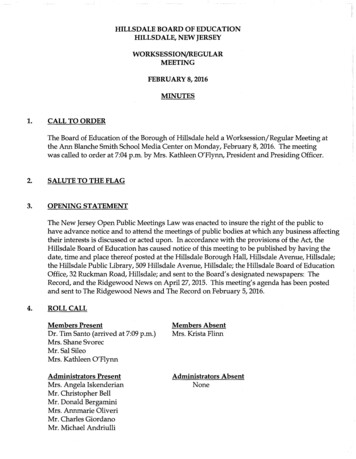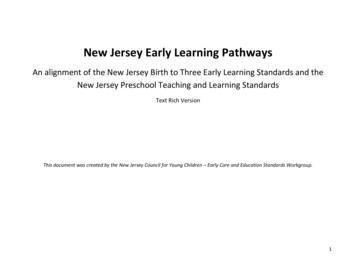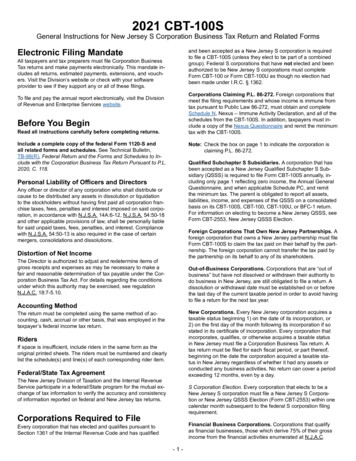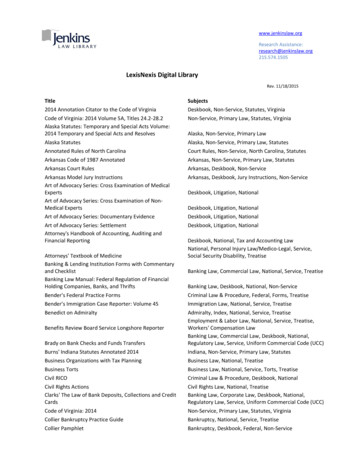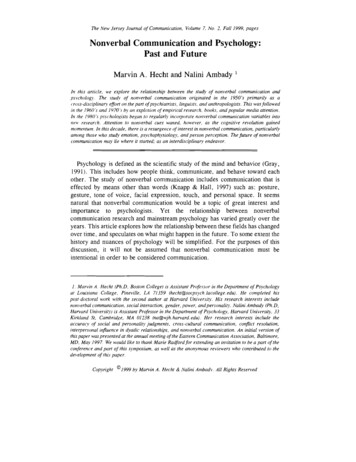
Transcription
The New Jersey Journal of Communication, Volume 7, No. 2. Fall 1999, pagesNonverbal Communication and Psychology:Past and FutureMarvin A. Hecht and Nalini Ambady'In this article, we explore the relariot ship between the srudy of nonverbal communication andpsvchology. The stu@ of nonverbal communication originated in the 1950's primarily as ac.ross-disciplinaty effort on ?hepart of psychiatrist. , linguists, and unrhropologists. This wasfollon edin rhe 1960's and 1970's by an explosion of empirical re.rearch. hooks, and popular media anemion.Itr rhe 1980's p.syr hologistsbegan to regularly incorporcrre nonverbal communication variables intonrM. research. Attetuiotr to nonverbal cues waned, however, as the cogt iriverevolurion gainedmomenrutn. It1 this decade, there is a resurgence of inrerest in nonverbal communication, particularlyamong those who srudy emotion, ps,vchophysiology, and person perceprion. The future of nonverbalcommunication may lie where ir started; as an interdisciplinaty endeavor.Psychology is defined as the scientific study of the mind and behavior (Gray,1991). This includes how people think, communicate, and behave toward eachother. The study of nonverbal communication includes communication that iseffected by means other than words (Knapp & Hall, 1997) such as: posture,gesture, tone of voice, facial expression, touch, and personal space. It seemsnatural that nonverbal communication would be a topic of great interest andimportance to psychologists. Yet the relationship between nonverbalcommunication research and mainstream psychology has varied greatly over theyears. This article explores how the relationship between these fields has changedover time, and speculates on what might happen in the future. To some extent thehistory and nuances of psychology will be simplified. For the purposes of thisdiscussion, it will not be assumed that nonverbal communication must beintentiona! in order to be considered communication.1 . Marvin A. Hecht (Ph.D, Boston College) is Assistant Professor in the Department of Psychologyar Louisiana College, Pineville, LA 71359 (hecht@socpsych.lacollege.edu). He conlpleted hispost-doctoral work with the second author at Harvard University. His research interests includenonverbal communicatiotl, social interaction, gender, power, andpersonality. Nalini Ambady lPh.D,Harvard University) is Assisrant Professor in the Departrrzent of Psychology, Harvard Universip, 33Kirkland St, Cambridee, M A 01238 (na@wih.harvard.eduJ. Her research interests include theaccurac,v r,f social and personality judgments, cross-cultural communication, conflict resolution,interpersonal influence in dyadic relationships, and nonverbal communication. An initial version ofthis paper was piesenred at the annual meeting of the Eastern Communicariot Association, altimore,M D , May 1997. We would like to thank Marie Radford for e-rrending an invitation to be a part of theconference and part ofthis symposium, as well as the anonymous reviewers who conrributed to thedevelopment of this paper.Copyright ' 1 9 9 9 by Marvin A . Hechr & Nalini Anzbadv. All Rights Reserved
2 Marvin A. Hecht and Nalini AmbadyAntecedents of the Psychological Study of Nonverbal CommunicationThe father of modern psychology is generally seen as William James who, in1890, published a book called the Principles of Psychology (James, 1890). It isinteresting that this early textbook contained a great deal of theory about emotionthat was not fully explored until much later (see Arkin, 1990). Instead, early workin experimental psychology explored such phenomena as object perception, theflow of consciousness, and learning processes. Some early thoughts aboutnonverbal communication also came from Charles Darwin who, in 1872,published The Expression of the Emotions in Man and Animals (Darwin, 1872).This was one of Darwin's less successful books in terms of its quality andultimate impact on the field (Fridlund, 1994). Still, the ideas in this bookregarding emotional expression and nonverbal behavior were intriguing and werenot fully explored until many years later (see Ekman, 1973).While the foundations for the study of nonverbal communication in psychologywere laid in the late 1800s in James' and Darwin's work, these ideas remaineddormant for some time while psychology became fascinated with behaviorism.Behaviorism. emphasizing the study of overt behavior and learning, becameprominent in the 1920s through its proponents John B. Watson and then later inthe 1940s and 1950s by B. F. Skinner. But behaviorism never touched on humannonverbal behavior, for two reasons. First it involved the study of behavior at amore general level of abstraction (actions, goals, and rewards) than the moremolecular cues studies in nonverbal communication. Second, it was thought thatthe principles of learning and behavior were best examined in lower animals suchas rats and pigeons, and studies of humans were relatively rare.While psychologists were exploring behaviorist principles, the study ofnonverbal communication was begun in 1955 by a group of interpersonalpsychiatrists, structural linguists and anthropologists who met in Palo Alto tojointly analyze a film. The group included Adam Kendon, Albert Scheflen, andRay Birdwhistell (Leeds-Hurwitz, 1987, as cited in Kendon, 1990). Their jointexpertise led to an analytic method called context analysis, in which all observedbehaviors are transcribed in excruciating detail onto a coding sheet that resemblesa musical score. Context analysis was later used to study such events as thestructure and sequence of human greetings, social behavior at an outdoor party,and the function of posture during family therapy.A Time of ResearchThe mid-1960's saw an explosion of research in many areas of nonverbalcommunication. For instance, Argyle and Dean (1965) studied eye contact andThe New Jersey Journal of Cornrnlmication, Volume 7, No. 2, Fall 1999
Nonverbal Cott tt unicationand Psychology: Past and Future 3how it related to conversational distance. Exline and his colleagues examinedpatterns of looking while speaking and looking while listening (Exline, Gray, &Schuette, 1965). Hess produced several interesting studies on pupil dilationpublished in Scientific American (Hess, 1975). Sommer ( 1969) studied theenvironment and personal space. Rosenthal (1967) discovered that expectationsmade by teachers and researchers can influence their outcomes, and that subtlenonverbal cues may play an important role in this process. Mehrabian (1969)studied the nonverbal cues of liking and immediacy.During this initial period of research there was a great deal of excitementregarding the power of nonverbal cues. Early empirical work was geared tomaking the argument that nonverbal behavior should not be ignored. Many studieswere published which demonstrated that nonverbal communication affectedpeople's reactions, since this was an important message in and of itself at thetime. However in the rush to collect data, an important element had been left out.Theoretical models and/or integrative studies were relatively rare, leaving a largebody of interesting but seemingly unrelated information.By the 1970's a number of scholarly volumes in psychology appearedsummarizing the growing body of research, such as Weitz's (1979) NonverbalCommunication and LaFrance & Mayo's (1978) Moving Bodies. The Journal ofEnvironmental Psychology and Nonverbal Behavior (now Journal of NonverbalBehavior) was also founded in 1978. At around the same time, the general publicseemed to take a strong interest in nonverbal communication as well. Journalistswrote a number of popular books on nonverbal communication (Koivumaki,1975). A report in the New York Times describing the work of the early pioneersevolved into a book (Davis, 1973). Other popular books included Body Language(Fast. 1970) which focused on how to use nonverbal communication to attractother people, and How to Read a Person Like a Book (Nierenberg & Calero,1971) which examined nonverbal behavior in negotiation situations.Ironically, while the popularity of these books did much to increase publicawareness, they may have delayed the acceptance of the initial wave of nonverbalcommunication research for the rest of the psychological community. Popularbooks vastly oversimplified the research findings, going way beyond what couldbe accurately concluded (Koivumaki, 1975). This led to bogus statements andrecommendations, such as the idea that people who fold their arms across theirchest are closed-minded, or the idea that people who unzip their jackets areliterally opening up (Nierenberg & Calero, 1971). Another false idea was that onecan manipulate one's own body language to influence others to make others moreattracted without their realizing it (Fast, 1970). Research since then has found thatcontext matters a great deal when interpreting any one nonverbal gestureThe New Jer.\ry Journal of Commutnc ufiot .Volume 7.No 2, Full 1999
4 Marvin A. Hecht and Nalir iAmbady(LaFrance & Mayo, 1978) and that consciously manipulating nonverbal cues canoften backfire (Ekman, 1985).In this time of heightened popularity of nonverbal communication, it becameincreasingly difficult to be considered a "serious" researcher while studyingnonverbal communication. Another obstacle came soon afterwards: the cognitiverevolution.The Cognitive Revolution and its ImpactIn the late 1970s and early 1980s, coinciding with the event of developmentsin computer and information processing technology, psychologists began toconstruct models of behavior using an information processing metaphor. Thecognitive revolution affected all areas of psychology, no1 just the study of brain(Gardner, 1985). In 1980, the Journal of Personality and Social Psychologynamed a new section of its journal Attitudes and Social Cognition. A new journal,Social Cognition, was founded in 1982. The focus shifted from behavior tothoughts and internal processes. People were no longer seen as actively behavingor operating on their environment. Instead, they were viewed as epistemologistswho actively constructed their environment, made attributions, and searched forcausal relations (Ross & Nisbett. 1991).Coinciding with this paradigm shift, for many areas of psychology there wasa shift away from questions about when a particular phenomenon happened, tohow and why it happened. For example, researchers studying helping behaviorshifted away from studying various conditions under which people help (a whenquestion) to studying what factors motivate helping, egoism or altruism (a whyquestion). Attitude researchers turned away from studying the conditionsnecessary for holding a certain attitude to examining why attitudes are importantin terms of the functions they serve. In methodological terms, there was a shiftaway from studying variables that moderated an effect to discovering theunderlying mediating or causal variables (Baron & Kemy, 1986).In the midst of this new emphasis on causes and processes, the emerging fieldof nonverbal communication was again dealt a setback. Questions of a causalnature require a theoretical model as a basis.There were some theories in nonverbal communication, such as Argyle andDean's (1 965) intimacy equilibrium model, and Henley 's (1977) theory that socialpower was the motivation underlying particular nonverbal behaviors. However,neither of these theories was able to serve as a comprehensive model forpredicting or explaining nonverbal behavior. As a result, the study of nonverbalcommunication was swept aside as the cognitive revolution gained momentum.Another reason that nonverbal communication may have been left out of thecognitive revolution was due to the notion that nonverbal communication isThe New Jersey Journal of Communication, Volume 7, No. 2, Fall 1999
Nonverbal Communicutiotz urld Psychology: Past and Future 5relatively automatic, not requiring thought. It became difficult to tie a supposedlythoughtless process to a paradigm that was concerned primarily with thinking.The fact that certain nonverbal cues may stimulate thinking was not pursued inpsychology either. While presently there is a renewed interest among cognitivepsychologists toward examining unconscious and automatic processes (Cohen &Schooler, 1997; Uleman & Bargh, 1989) which bodes well for the study ofnonverbal communication, at the time there did not seem to be a good fit betweenthe fields.The cognitive revolution continues today as it evolves in the form of sub-fieldswithin separate disciplines in psychology (e.g., cognitive development, animalcognition, social cognition). Many jobs in social psychology are beingre-configured as jobs in social cognition, and some universities (such as theMassachusetts Institute of Technology) have a department of cognitive science butno longer a psychology department. A number of psychologists who studiednonverbal communication full-time in the 1960s or 1970s have since shifted tofocus more on social cognition in their research, or they have dropped theirnonverbal communication research entirely. Thus the amount of research focusingexclusively on nonverbal communication has remained relatively flat since the1970s. One consequence of this is that while the Journal of Nonverbal Behaviorhas been able to maintain its initial publication rate of four issues a year, it hasnot undergone a major expansion.There is still cause for hope, however. In the remaining sections, reasons foroptimism about the psychological study of nonverbal communication in the nextmillennium will be discussed.The Future of Nonverbal Communication and PsychologyThe first cause for optimism is that the pioneering work on nonverbalcommunication made it acceptable to include nonverbal variables in psychologicalstudy as a dependent or independent measure. For example, researchers whostudy topics such as empathy, expectancies, or deception now regularly examinenonverbal cues. Even areas of psychology that have traditionally not looked atnonverbal cues (e.g., the study of attitudes) now include nonverbalcommunication in their experiments (e.g., Hrubes, & Feldman, 1997; Marsh,Hart-O'Rourke, & Julka, 1997). Thus the number of nonverbal studies inpremiere psychology journals is increasing (Hall, 1992). For example, recentstudies in the Journal of Personality and Social Psychology include smiling andOlympic athletes (Fernandez-Dols, & Ruiz-Belda, 1995), touching as a functionof hierarchy (Hall & Veccia, 1990). and judged and behavioral coordination(Capella, 1997). Today many researchers are studying nonverbal communicationThe New Jersey Journal of'Communication, Volume 7, No. 2, Fall 1999
6 Marvin A. Hechr and Nalini Ambadyas one facet of a larger human dynamic, such as power, deception, anxiety, orprejudice. As a result of the increased recognition of nonverbal behavior, for thefirst time there is a chapter on nonverbal communication in the current edition ofthe Handbook of Social Psychology (DePaulo & Friedman, 1998).It is also interesting to examine which journals are leading this trend. Certainpsychological journals seem to include more nonverbal studies than others. Toexamine this trend, journal titles were analyzed and coded for the number ofarticles on nonverbal communication they contained. The journal titles werederived from an extensive literature review conducted as part of two largemeta-analyses, one on gender differences in smiling (LaFrance, Hecht, & Noyes,1994), and one on immediacy cues and liking (Tickle-Degnen, Hecht, Harrigan,Ambady, & Rosenthal, 1997). References were also included from a review oftouching research by Stier & Hall (1984). Finally, every journal reference fromthe new chapter on nonverbal communication in the Handbook of SocialPsychology (DePaulo & Friedman, 1998) was coded. This collection of citations,therefore, includes almost every aspect of nonverbal behavior, and while it is nota random sample, it does provide an approximate idea of which journals have themost nonverbal content. In the above meta-analyses and reviews, the search wasnot restricted to psychology journals, but included other fields such ascommunication and medicine.Table 1 shows the journals listed in descending order in terms of frequency ofnonverbal articles. Journals that were represented only once or twice are notlisted. Overall, the table indicates that nonverbal communication is studied in awide variety of fields, nationally as well as internationally. It was expected thatthe Journal of Nonverbal Behalior would be near the top (it is second) becauseby definition all studies have to do with some aspect of nonverbal communication.What is really striking is the number of nonverbal articles in the sample from theJournal gf Personality and Social Psychology, widely considered to be thepremiere journal in the field of social psychology. The number of articles fromthis monthly journal exceeds the Journal of Nonverbal Behalior, which is onlypublished quarterly. Other psychology journals with frequent nonverbal studiesare Personality and Social Psychology Bullerin (the nexl most prestigious journalin social psychology), Journal of Counseling Psychology, and several otherdevelopmental, gender, and personality related journals. In the field ofcommunication, the journals that most frequently publish articles on nonverbalcommunication include Human Communicarion Research and CommunicationMonographs. On the whole, the table shows that there are a wide variety ofjournals that publish nonverbal articles. This was not the case in the early 1960sbefore the field became popular.The New Jerse! Jourrlal c Cc mmunication, Volume 7, No. 2, Fall 1999
Non erbalCommunicorion and Psychology. Pasr and Future 7Table 1Frequency of Nonverbal Articles in Selected Journals (Please Give Dale Ranges)Journal NameFrequencyJournal of Personality and Social PsychologyJournal of Nonverbal BehaviorPersonality and Social Psychology BulletinJournal of Counseling PsychologyChild DevelopmenrHummt Communicarion ResearchDevelopmenrul PsychologyJournal of PersonalitySex RolesJournal of Experimental Social PsychologyJournal of Consulring and Clinical PsychologyJournal of Social PsychologyPerceprual and Moror SkillsCommun catronMonographsJollrnul of Applied Social PsychologyBritlsh Journal of Social and Clinical Psycholoy Journal of Research in PersonalityPsychiartyEuropean Journal of Social PsychologyJo trnalof Applied PsychologyJournal of Social and Personal RelarionshipsPsychological ReportsRepresenfarive Research in Social PsychologySocial Psychology QuarterlyInrernarional Journul of PsychologyJournal of CommunicarionJapanese Psychological ResearchThe second cause for optimism is that in addition to the fact that nonverbalcommunication is being re-integrated into many areas of psychology, there hasalso been a re-emergence of certain fields that are inherently nonverbal in theirfocus: emotion, psychophysiology, and person perception. Each of these arediscussed in turn.First, research on emotion is becoming very popular. Attitudinal researchersand social cognitive psychologists now recognize that many thoughts areaffect-laden, and therefore emotion is an important variable to study. Someeminent researchers who have been working in the emotion field for years havefinally begun to be recognized. For example, Paul Ekrnan recently won a lifetimecontribution award from the American Psychological Association. There have alsobeen special issues on emotion in mainstream journals (e.g., Arkin, 1990) andtributes to Darwin (Ekman, 1973). There is an active journal entitled Motivationand Emotion that is well respected in the field of emotion, and the AmericanThe New Jersey Journal of Conrmunicarion. Volume 7, No. 2, Fall 1999
8 Marvin A. Hechr and Nalini AmbadyPsychological Association has announced a new journal entitled Emotion. Recentbooks and chapters on emotion also summarize work on emotional intelligence(Coleman, 1995; Mayer & Salovey, 1997) and emotional contagion (Hatfield,Cacioppo, & Rapson, 1994).Another emerging field that employs nonverbal cues is the field of socialpsychophysiology (Blascovich, 1990; Cacioppo & Petty, 1983). A typical studyexamines how fine-grained physiological measures such as heart rate and skinconductance vary in different social situations. Part of the battery of physiologicalmeasures collected in a typical study include traditional nonverbal cues such assmiling and nodding. Other measures, such as facial EMG (Fridlund, 1991), lieat the boundary between "internal" physiological responses and "external"nonverbal cues. Social psychophysiology is also used to study interpersonalrelationships, including patterns of negative affect reciprocity in marriage(Levenson, & Gottman, 1983) and how these patterns effect the likelihood ofdivorce (Markman, 1981).Lastly, personality researchers, who study the accuracy of person perception,are increasingly looking to nonverbal cues as potential moderators of accuracy.In a typical study, participants observe another person for a short period of time,and then make ratings of that person (Kenny, 1994). The goal is to see whethernaive judges can accurately evaluate the personality of another person undervarious conditions. Research has shown that people are indeed accurate at greaterthan chance levels at detecting other's thoughts and feelings (Ambady &Rosenthal, 1993; Borkenau & Liebler, 1992; Snodgrass, Hecht, Ploutz-Snyder,1998). As part of this type of study, researchers often code specific nonverbalcues to examine what accounts for the accuracy. For example, in a study ofteachers (Ambady & Rosenthal, 1993). it was found that one variable that wassignificantly predictive of positive teaching evaluations was frequent gesturing.Some Reservations About the FutureWhile all of the recent attention on psychology and nonverbal communicationseems encouraging, at the same time there are some aspects of the presentresurgence that leave some reservations. First, as a consequence of the focus onintegrating nonverbal behavior with the particular psychological dynamic beingstudied, the number of psychologists studying nonverbal communication as a topicon its own has decreased greatly since the 1970s. Today, very few psychologistsfocus exclusively on nonverbal communication. Most psychologists who studynonverbal communication today are known primarily as health psychologists,emotion researchers, gender researchers, personality psychologists, etc. It couldbe argued that nonverbal communication should only be studied within aThe New Jersey Journal of Communication, Volurrie 7, No. 2, Fall 1999
Nonverbal Communication and Psychology. Past and Future 9particular domain--but the splintering across domains may be holding back thedevelopment of an integrated theory of nonverbal communication.Another potential problem with the re-emergence of nonverbal research inemotion and psychophysiology in particular has to do with some underlyingassumptions of research on emotion. For example, emotion researchers examinenonverbal cues from the perspective that they represent external manifestationsof people's internal affective state (Ekman, 1992). From this perspective, thefunction of smiling is to express pleasure or happiness. The contrastingperspective is that facial expressions stem from social and interpersonal needs,and evolved to serve more of an interpersonal communicative function than anexpressive one (Fridlund, 1994). This debate has produced some of the mostinteresting and creative classic experiments in psychology to date. Twoexperiments, both published in the Journal of Personulit)! and Social Psychology,are worth describing into more detail (Fridlund. 1991; Kraut & Johnston, 1979).Kraut and Johnston (1979) wanted to test whether smiles were more associatedwith emotion or with sociality. They conducted their study at a local bowlingalley. They reasoned that if the emotional hypothesis were true, then bowlers whoget a strike should start smiling as they see the ball knocking over the pins. Onthe other hand, if the sociality hypothesis were true, then bowlers would not startsmiling until they turned around to face their friends. One observer was stationedat the end of the bowling line inside the pin setting equipment, while anotherobserver sat behind the pit containing the bowler's friends. The results showedstrong support for the sociality hypothesis. Across 116 observations, bowlerssmiled 36 times while facing their friends, and only 4 times while facing the pins(Kraut & Johnston, 1979). Smiling was also unrelated to performance. Only oneof the 4 smiles was after a good score, even though bowlers rolled a total of 26strikes or spares. Kraut and Johnston (1979) concluded that smiling is more of asocial act than an emotional one. They also conducted several follow-upexperiments by conducting naturalistic observations of groups of people at Cornellhockey games, and of passersby in downtown Ithaca. Results showed that smilingcould be predicted better by the presence of other people than by factors such aswhether the team was winning or whether it was a sunny day or not.Fridlund (1991) also conducted a now classic experiment on the sociality ofsmiling. At the time, most previous research on emotion used a methodologywhereby people were shown emotion-provoking films while alone in a room,based on the idea that the resulting expressions would be relatively pure and freeof external and social influences. Fridlund set up four experimental conditionswhich varied in their sociality. In all conditions, the participant watched a filmdesigned to elicit pleasant feelings (puppies, babies, and sea otters playing, aswell as a Steve Martin comedy sketch from Saturday Night Live). In the first,non-social condition, participants watched the film alone in a room (similar toThe New Jersey Journal of Conununicution, Volun e7, No. 2, Fall 1999
10 Manin A. Hechr and Nalini Ambadyother emotion experiments). In another condition, participants watched the samefilm while a friend they had brought with them filled out some questionnaires inan adjacent room. In the third condition, the friend watched the same film as theparticipant, but in an adjacent room. Finally, in the most social condition, thefriend watched the film in the same room with the participant. This was the onlycondition where the friends were actually together in the same room and wasconsidered the most social condition.The results of this study are fascinating. Fridlund (1991) found that smiling (asmeasured by Facial EMG) increased linearly as the sociality of the situationincreased. That is, even though in three of the conditions, participants wereactually alone, their level of smiling corresponded to the "psychologicalcloseness" of their friend. Participants smiled more when their friend was fillingout questionnaires than when no friend was present, and they smiled even morewhen they thought their friend was watching the same film next door. Participantssmiled the most when the friend was actually in the same room with them.Moreover, this increased smiling was not due to happiness, which remainedconstan: across the four conditions. Fridlund concluded that people smile readilyin response to the presence of real or imagined others, and that even solitaryfacial behavior is not necessarily a result of emotion alone.Fridlund's study did not distinguish between genuine and non-genuine smiles.Elsewhere, Ekman (1992) has demonstrated that smiles of genuine enjoymentinvolve not only the muscle which pulls the lip corners upward (zygomaticusmajor) but also the muscle circumferencing the eyes (orbicularis ocularis),producing crow-feet wrinkles at its the outer edges. Had Fridlund measured theorbicularis ocularis muscle as well. he might have found that genuine smiles wererelated to happiness. Perhaps it was primarily the non-genuine smiles then thatvaried with the sociality of the situation.Other experiments will no doubt attempt to further delineate emotional andsocial motivations for nonverbal behavior. In the mean time, more experimentsare needed which focus not just on sociality in general, but on particular socialroles and relationships. For example, Hecht & LaFrance (1988) examined howbeing in a powerful role may give one the license to smile when happy or notsmile if one does not feel happy. Psychiatrist Albert Scheflen also considerednonverbal cues important in social interaction, but many of these ideas remainempirically untested. For example. while Scheflen's work on postural mirroringand rapport (Scheflen, 1964) has been widely explored in the last 30 years(LaFrance, 1985; Capella, 1997; Bernieri & Rosenthal, 1991), his ideas about therole of nonverbal signals in initiating courtship (Scheflen, 1967) and inmaintaining the social order (Scheflen, 1972) have been left relatively unexplored.Further, despite the recent advances in nonverbal communication research,most introductory psychology textbooks ignore nonverbal communication. SomeThe New Jersey Journalof Cortr nut icutiot .Volume 7, Nu.2. Fall 1999
Nonverbul Cotii nunrtat onand Pcichologv Past and Future 11texts include a small section or box on nonverbal communication, but theplacement seems to be haphazard--sometimes it appears in the emotion section(e.g., Hockenbury & Hockenbury, 1997), the social behavior section (e.g.,Gleitman, 1996), the language section (e.g., Bernstein, Clarke-Stewart, Roy, &Wickens, 1997), or some other section.Concluding ThoughtsIn summary, it appears that the link between psychology and nonverbalcommunication has varied greatly over time. Currently, there is a resurgence ofinteresr, and major journals are publishing nonverbal communication research bypsychologists. However. only time will tell if this new interest continues, andwhether both intrapersonal (emotional) and interpersonal (social) aspects ofnonverbal communication will be st
Another false idea was that one can manipulate one's own body language to influence others to make others more attracted without their realizing it (Fast, 1970). Research since then has found that context matters a great deal when interpreting any one nonverbal gesture The New Jer.\ry Journal of Commutnc ufiot . Volume 7. No 2, Full 1999



